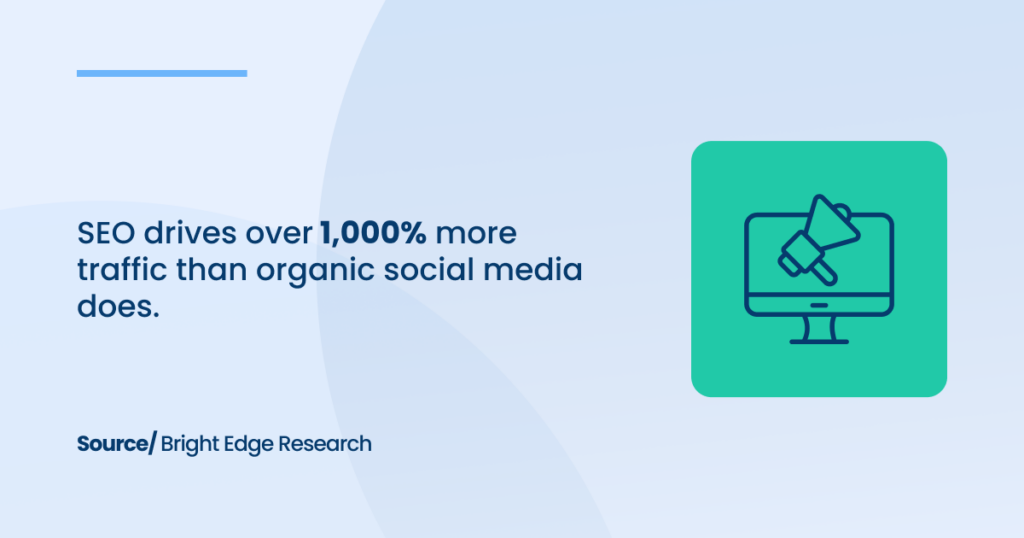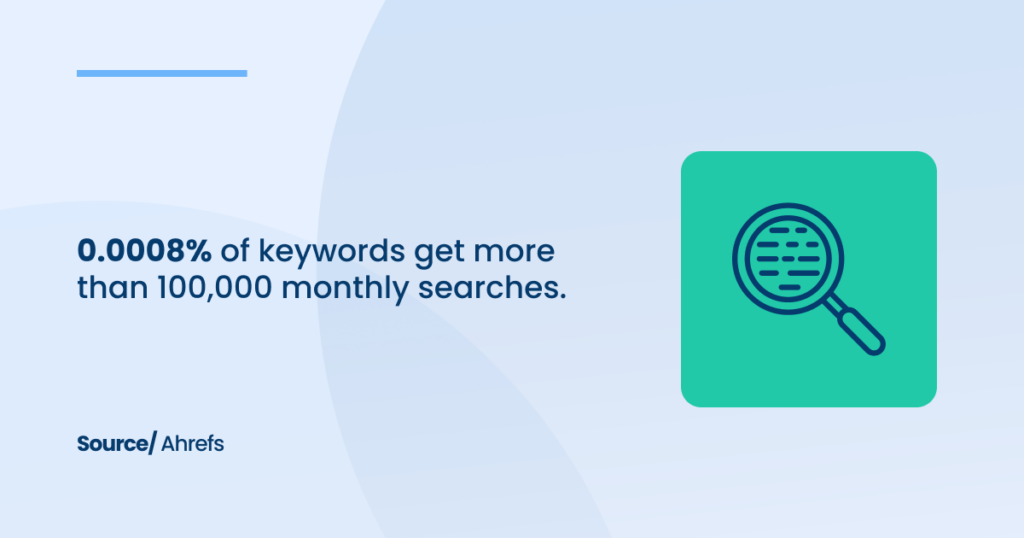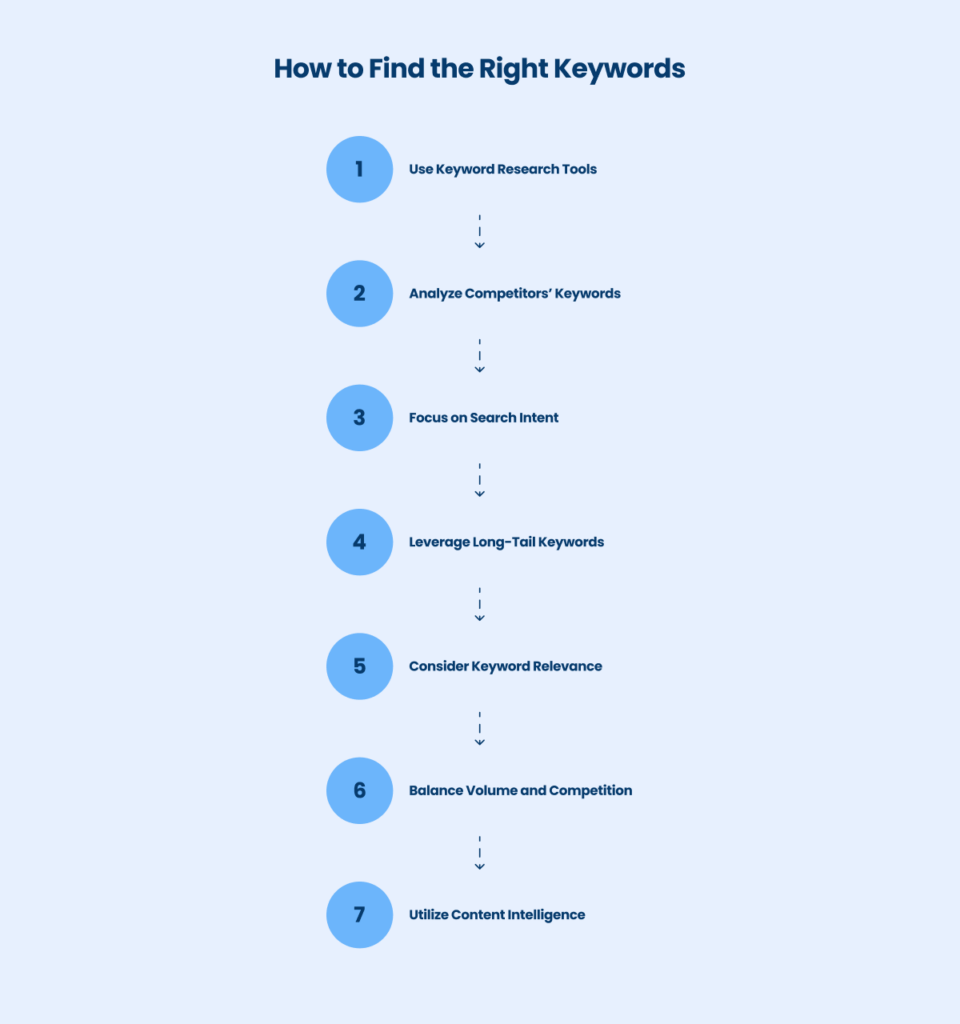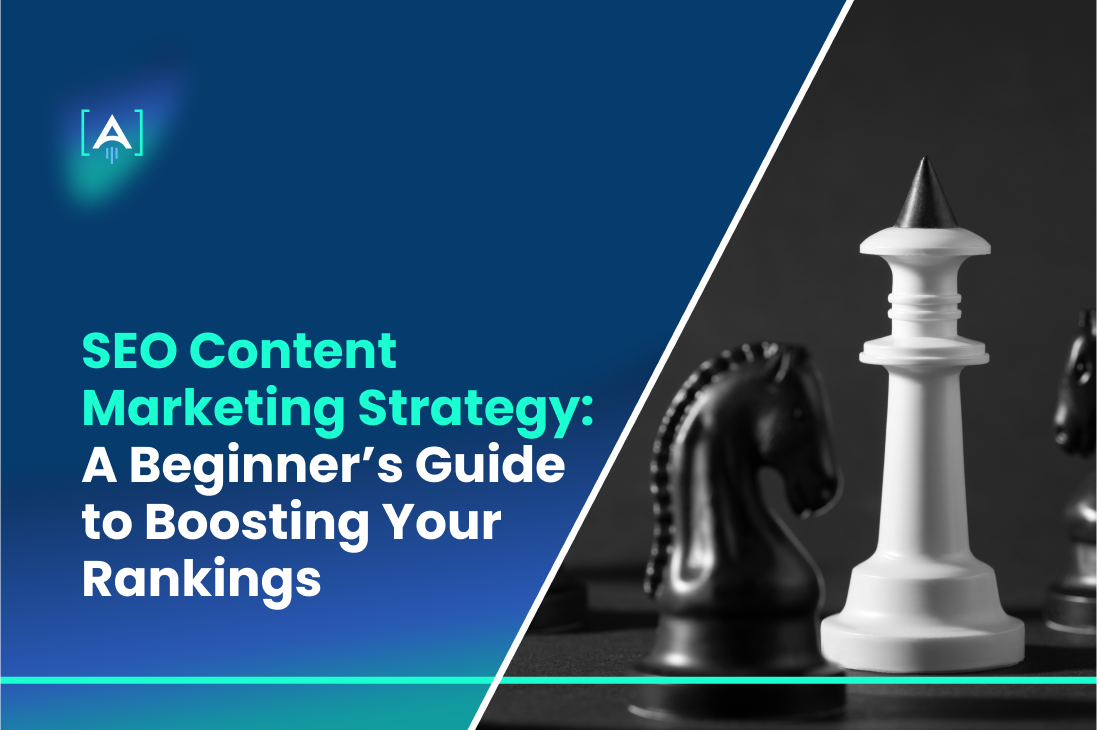Imagine your website as a bustling city street.
The more people that walk by, the more likely they will stop and visit your shop.
In the digital world, those “people” are search engine users, and your shop is your website.
To attract more visitors, you must ensure your street is well-lit, easy to navigate, and has exciting things to see.
That’s where SEO content marketing comes in.
It’s making your website more visible and attractive to search engine users, making them more likely to find you and become your customers.
According to the Brightedge report, 68% of online experiences begin with a search engine.

Understanding and implementing effective SEO techniques can increase your website’s visibility, attract organic traffic, and drive conversions.
A quality Content Marketing Agency will adapt these strategies to your business needs, ensuring your content is optimized for search engines.
The blog post will introduce the SEO Content Marketing Strategies to boost the rankings.
What is SEO Content Marketing?
72% of online marketers consider high-quality content creation the most efficient SEO tactic.
SEO content marketing is the strategic combination of search engine optimization (SEO) and content creation to enhance a website’s visibility and ranking on search engine results pages (SERPs).
At its core, it involves creating high-quality, relevant, and engaging content optimized for search engines and users. The goal is to attract organic traffic by addressing the queries and needs of your target audience while adhering to SEO best practices.
Source: Bridget Edge Research
An effective SEO content marketing strategy focuses on aligning your content with your audience’s keywords and search intent.
Businesses can position themselves as authorities in their industries by conducting thorough keyword research, incorporating on-page SEO elements, and ensuring content relevance. This results in increased traffic, improved search engine rankings, and higher conversion rates.
Why SEO and Content Marketing Work Together
SEO and content marketing are two sides of the same coin, and their collaboration forms the backbone of a successful SEO content strategy.
Content marketing focuses on creating valuable and relevant content, while SEO ensures that search engines can discover it. Together, they drive organic traffic, enhance visibility, and improve engagement.
SEO and content marketing work together so effectively:
- Content is the foundation of SEO: Without high-quality, optimized content, search engines cannot rank. Content gives search engines like Google the material they need to evaluate relevance, authority, and user satisfaction.
By crafting content aligned with an SEO content marketing strategy, businesses can ensure that their website addresses user queries and appears prominently in search engine results pages (SERPs).
- SEO enhances content’s discoverability: Even the best content is ineffective if users can’t find it. SEO techniques, such as keyword optimization, meta descriptions, and internal linking, ensure that your content is structured to make it easy for search engines to index and display.
A well-implemented winning SEO content strategy will use SEO tactics to get content in front of the right audience at the right time.
- Content marketing drives engagement and shares: When content is well-written, informative, and valuable to the reader, it is more likely to be shared on social media and linked to by other websites.
These shares and backlinks are critical signals to search engines that your content is authoritative, which improves its rankings on SERPs. This, in turn, leads to more organic traffic and potential conversions.
- SEO provides measurable results: One significant advantage of SEO is that it provides clear, data-driven insights into content performance. Metrics like keyword rankings, click-through rates, and bounce rates allow businesses to evaluate the effectiveness of their SEO content strategy and make adjustments as needed.
Businesses can achieve long-term success by continuously optimizing content based on SEO data.
- Content supports semantic SEO: Modern search engines no longer match keywords; they understand the context and relationships between words. By focusing on semantic SEO, businesses can ensure their content addresses a broader range of related search queries.
This involves producing comprehensive, topic-rich content that covers various aspects of a subject rather than just targeting a single keyword.
Check Our Ultimate Content Marketing Glossary
Understanding SEO Fundamentals
Before diving into the intricacies of a successful SEO content marketing strategy, it’s crucial to grasp the core principles of SEO.
SEO, or search engine optimization, is improving your website’s visibility on search engine results pages (SERPs) through targeted strategies, focusing on both on-page and off-page elements.
Importance of Keywords in SEO
Keywords are the foundation of any SEO content strategy. Users type these words and phrases into search engines to find information.
When you optimize your content around relevant keywords, you’re making it easier for search engines to understand what your content is about and match it with user queries.
94.74% of keywords get 10 monthly searches or fewer.

An SEO content marketing strategy relies on identifying the right keywords to target, integrating them naturally into your content, and ensuring you’re addressing the search intent behind those keywords.
Keywords can vary in type, including short-tail keywords (broad terms) and long-tail keywords (more specific phrases).
Focusing on relevant keywords with significant search volume can improve your content’s chance of appearing in search engine results and attract more organic traffic. However, it’s not just about stuffing keywords into your content.
How to Find the Right Keywords
Finding the right keywords is critical in any SEO content marketing strategy. The goal is to identify keywords that align with your business goals and the search intent of your target audience.

On-Page SEO Optimization
On-page SEO optimization is a crucial element of any SEO content marketing strategy. It involves optimizing individual web pages to rank higher and earn more relevant traffic in search engines.
While many aspects of SEO are technical, on-page SEO focuses on improving a page’s content and HTML source code to make it more attractive to both users and search engines.
When properly executed, an effective SEO content strategy ensures that every element of your page is optimized for search engines while providing users a seamless and engaging experience.
Title Tags and Meta Descriptions
Title tags and meta descriptions are two of the most important on-page SEO elements, as they directly impact how your content appears in search engine results.
These elements are essential to your SEO content marketing strategy because they act as the first impression users get when encountering your content on a SERP.
Title Tags
Title tags are the clickable headlines that appear on search engine results pages. They play a key role in influencing whether a user clicks on your link. A well-crafted title tag should be clear, concise, and contain the primary keyword for which the page is optimized.
For example, if you’re writing content related to “Generative AI marketing,” your title tag should include this exact keyword to signal relevance to both search engines and users. A well-optimized title tag might look like this: “Generative AI Marketing: How to Use AI Tools for Better Campaigns.”
This title not only includes the keyword but also provides context for what the page is about, increasing the likelihood of a user clicking through.
Key tips for optimizing title tags:
- Keep title tags between 50-60 characters to ensure they display fully on SERPs.
- Incorporate the primary keyword towards the beginning of the title tag.
- Ensure the title tag is compelling and relevant to the content of the page.
Meta Descriptions
Meta descriptions are short summaries of your content that appear below the title tag on SERPs. While meta descriptions don’t directly impact your rankings, they influence click-through rates (CTR) by giving users a snapshot of what they can expect when they click on the link.
A strong meta description is essential for driving traffic and should be an integral part of your SEO content strategy.
Source: Azaryan Growth Agency
For instance, a meta description for a page optimized for semantic SEO might look like this: “Discover the benefits of semantic SEO and how it can improve your website’s rankings by delivering relevant, user-focused content.” This description gives users a clear idea of the value they’ll receive, increasing the likelihood of a click.
Key tips for optimizing meta descriptions:
- Keep meta descriptions between 150-160 characters to ensure they display correctly on SERPs.
- Include the primary keyword naturally, but avoid keyword stuffing.
- Use actionable language and create a sense of urgency to entice users to click.
Optimizing your title tags and meta descriptions, focusing on keywords and user engagement, can improve your search engine rankings and click-through rates, making them an essential part of any SEO content marketing strategy.
Internal Linking and URL Structure
Internal linking and URL structure are two often overlooked but highly impactful elements of on-page SEO. These components contribute to a seamless user experience, improve site navigation, and enhance the way search engines crawl and index your website.
When properly optimized, they support your overall SEO content strategy and improve rankings.
Internal Linking
Internal links point from one page on your website to another page on the same domain.
Internal linking serves several vital functions in an SEO content marketing strategy:
- Improves Site Navigation: Internal links help users find related content easily, reducing bounce rates and increasing time spent on your site. This enhances the user experience and signals to search engines that your site provides valuable content.
- Distributes Link Equity: When one page on your site has high authority (e.g., receiving a lot of backlinks), linking to other relevant pages helps distribute this authority, allowing those pages to rank higher.
- Enhances Content Discoverability: Search engines use internal links to crawl your website. The more links you have pointing to critical pages, the easier for search engines to discover and index that content.
When implementing internal linking, use relevant anchor text containing keywords or phrases related to the page you’re linking to. For example, if you’re linking to a page about “writing SEO content,” the anchor text should be descriptive, like “Learn how to write SEO content that ranks higher.”
Moreover, tools like content intelligence and ChatGPT plugins can assist in identifying relevant content across your website that can be linked together. This improves the internal linking structure and helps ensure that your users are always directed to valuable and related content.
Key tips for optimizing internal links:
- Use descriptive anchor text that includes relevant keywords.
- Ensure the links are placed naturally within the content.
- Avoid overloading a page with too many internal links, as this can overwhelm users and dilute the authority passed through links.
URL Structure
The URL structure of a webpage plays a crucial role in user experience and search engine rankings. A well-optimized URL structure should be simple, descriptive, and include the main keyword.
Source: Azaryan Growth Agency
Search engines use URLs to understand a page’s context, and users prefer URLs that clearly indicate what the page is about.
For example, a URL optimized for a page about SEO content strategy might look like this: www.yourwebsite.com/seo-content-strategy-guide. This URL is clean, easy to read, and includes the main keyword.
Keeping the URL structure concise and focused makes it easier for search engines and users to navigate your site.
Key tips for optimizing URL structure:
- Keep URLs short and descriptive, avoiding unnecessary words or characters.
- Include the primary keyword in the URL to improve relevance for search engines.
- Use hyphens to separate words for readability (e.g., seo-content-strategy-guide).
- Avoid using dynamic parameters or unnecessary URL numbers (e.g., www.yourwebsite.com/page?id=123).
Incorporating a clear and logical URL structure as part of your SEO content marketing strategy ensures that search engines and users can easily identify and access your content.
Creating SEO-Friendly Content
Creating SEO-friendly content is essential for any business looking to improve its online visibility and drive organic traffic.
Crafting high-quality, informative, and engaging content that appeals to both users and search engines is the foundation of an effective SEO content marketing strategy.
How to Write Content that Ranks
To write content that ranks, you must align your content creation efforts with search engine algorithms and user intent. Search engines like Google evaluate content based on relevance, quality, structure, and user engagement.
Content Length and Quality
When it comes to SEO, both content length and quality matter.
Long-form content performs better in search rankings because it provides comprehensive topic coverage. However, quality is equally important. Search engines prioritize well-researched and informative content that effectively answers users’ questions.
Generally, aim for a content length of 1,000 to 2,000 words for blog posts, guides, and tutorials. This provides enough depth to cover the topic while keeping readers engaged. However, the key is avoiding fluff and delivering valuable insights. High-quality content includes:
- Clear, concise writing that is easy to understand.
- Original research, data, or examples to back up your points.
- Well-structured content with logical headings and subheadings to improve readability.
Combining long-form content with high quality creates a strong foundation for your SEO content marketing strategy, helping your pages rank higher and attract more organic traffic.
Types of SEO Content
An effective SEO content marketing strategy relies on creating various types of content to engage different segments of your audience.
Source: Content Marketing Institute
Search engines favor websites offering diverse content, as this demonstrates authority and expertise on various topics. Here are some of the most common types of SEO content that can help boost your rankings:
Blog Posts, Guides, and Tutorials
Blog posts, guides, and tutorials are some of the most popular types of SEO content because they allow you to cover a wide range of topics while targeting specific keywords. These formats are ideal for providing valuable information, answering questions, and demonstrating expertise in your industry.
- Blog posts: Regularly publishing blog posts helps you stay relevant in your niche and gives search engines fresh content to crawl. Blog posts should target specific keywords related to your business and address user intent.
For example, a blog post titled “How to Create an Effective SEO Content Marketing Strategy” can target long-tail keywords while providing actionable insights for your audience.
- Guides: Comprehensive guides are an excellent way to cover a topic in depth. They often serve as pillar content for building other related posts.
For example, a guide on “SEO content strategy” can serve as a central resource that links to more detailed blog posts and tutorials.
- Tutorials: Step-by-step tutorials help users solve specific problems and are often highly shareable. They can target keywords that align with user searches for “how-to” information.
For instance, a tutorial on “How to Use Keyword Clusters for Better SEO Rankings” can attract users looking for practical advice on improving their SEO efforts.
When creating these types of content, remember to use keyword clusters to target multiple search terms, provide clear and actionable insights, and incorporate multimedia elements like images or videos to enhance user engagement.
Product Pages and Landing Pages
Product pages and landing pages are essential for businesses that sell products or services online. These pages should be optimized for conversions and search engine visibility.
Source: Azaryan Growth Agency
While blog posts and guides focus on information and education, product and landing pages are designed to drive sales or leads.
- Product pages: These pages should include clear descriptions, optimized images, and relevant keywords.
A well-optimized product page for a specific item can target keywords like “best SEO tools” or “SEO content marketing software.”
Ensure that the content is informative and addresses the pain points of your potential customers while integrating SEO best practices such as using internal links and including user reviews or testimonials.
- Landing pages: Landing pages are often used for paid advertising or specific campaigns, but they can also be optimized for organic search.
When creating SEO-optimized landing pages, focus on a single keyword or phrase, such as ��“SEO content strategy for small businesses,” and ensure that the page delivers value in line with that search intent.
Use compelling calls-to-action (CTAs), clear headings, and concise content to engage visitors and encourage conversions.
By optimizing product and landing pages, you can increase the likelihood of ranking for transactional keywords that lead to direct conversions. These pages should be an integral part of your SEO content marketing strategy, as they help drive both organic traffic and revenue.
Email Marketing for SEO
Email marketing may seem separate from search engine optimization (SEO), but it can support your overall SEO content marketing strategy.
When used effectively, email marketing can drive more traffic to your website, enhance user engagement, and ultimately improve your search rankings. Creating targeted email campaigns linking to your content can boost your website’s authority and drive organic traffic.
In 2024, e-mail marketing revenue was projected to surpass 9.5 billion U.S. dollars.
Source: Forbes
One of the main ways email marketing benefits SEO is through increased traffic to your site. Search engines like Google reward websites that consistently receive a steady flow of visitors.
By sending regular newsletters or updates that include links to your blog posts, guides, or product pages, you can keep your audience engaged while increasing visits to your site.
When users find your content valuable and spend more time on your pages, it signals to search engines that your website is trustworthy and relevant, which can lead to improved rankings.
Influencer and Partnership Marketing
Influencer and partnership marketing are powerful strategies that can amplify the reach of your SEO content marketing strategy.
Source: Influencer Marketing Hub
By collaborating with influencers and forming partnerships with other brands or businesses, you can gain access to new audiences, build credibility, and increase backlinks—all of which positively impact your SEO efforts.
Influencer Marketing for SEO
Influencers have a significant following on social media or other digital platforms. Their influence over their audience can be leveraged to promote your content, products, or services.
When influencers share your content with their audience, it can increase visibility and traffic to your website, improving your search engine rankings.
Partner with [A] Growth Agency for Enhancing Your SEO Content Marketing Strategy
Remember, SEO content marketing is an ongoing process that requires continuous attention and adaptation.
In today’s digital landscape, SEO content marketing is no longer an option but a necessity.
Staying up-to-date with the latest SEO trends ensures your website remains competitive and continues to deliver results.
[A] Growth Agency is there for you.
Our experienced team believes in the power of data to inform and drive every strategy, ensuring our actions are as effective as they are innovative.
We craft personalized solutions that meet each client’s unique needs and adapt to the ever-changing digital landscape.
If this is what you are in search of, go ahead!

